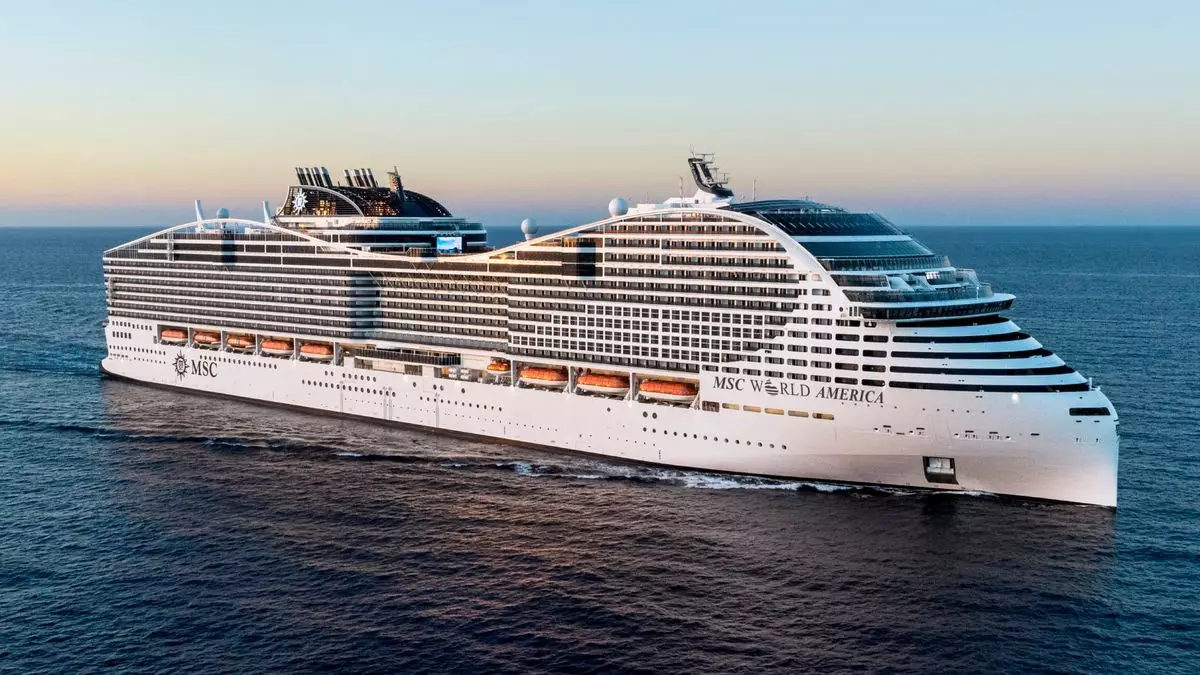The cruise industry, long associated with leisurely voyages and exotic destinations, is at a pivotal moment as it approaches 2025. The aftermath of the COVID-19 pandemic, combined with a surge in travel demand, has created a paradoxical environment where anticipated growth coexists with emerging consumer reluctance. This article delves into the anticipated trends, market dynamics, and strategic adaptations that the industry must embrace to thrive in a post-pandemic landscape.
Post-Pandemic Recovery and Pricing Dynamics
As the cruise industry steadily recovers from COVID-19 disruptions, projections indicate that 2025 will mark a significant shift. With strong forward bookings and capacity constraints, cruise lines are likely to maintain healthy pricing throughout the year. However, as rising consumer debt and declining savings lead travelers to reconsider their spending habits, particularly on extravagant vacations, demand for longer trips is expected to diminish. Clayton Reid, the former CEO of MMGY Global, notes that while luxury segments are somewhat insulated from these changes, larger cruise lines with more substantial ships may face challenges as consumers practice increased fiscal caution.
Despite potential fluctuations in demand, the cruise industry’s value proposition—offering comprehensive vacation experiences at competitive prices compared to land-based alternatives—remains a strategic advantage. The ability to absorb these demand shifts while crafting enticing experiences for vacationers will be crucial.
Innovations and Attractions: Cruising Beyond the Ocean
To fend off any impending slowdown, cruise lines are poised to innovate vigorously. A significant aspect of their strategy involves adapting attractions typically found on land to the cruise experience. Royal Caribbean’s Icon of the Seas features an extravagant six-slide water park, reflecting this approach. By creating onboard experiences that captivate guests and encourage spending before they even set foot on the ship, cruise lines can bolster their revenue stream.
Moreover, a notable trend is the introduction of several large ships in 2025, highlighted by the anticipated launch of the MSC World America. As the cruise industry features increasingly grand vessels, the landscape will evolve to include more private destinations. These developments cater to a desire for unique and secluded experiences that set them apart from traditional cruise itineraries.
The year 2025 is shaping up to be remarkable not only for new ships but also for the expansion of private destinations. The successful launch of dedicated beach resorts—such as Carnival’s Celebration Key on Grand Bahama and Royal Caribbean’s Royal Beach Club in Nassau—highlights a strategic pivot toward exclusive guest experiences. Additionally, enhancements to existing private islands like Norwegian’s Great Stirrup Cay and MSC’s Ocean Cay underscore the industry’s commitment to evolving its offerings to meet traveler expectations.
Such developments in private destinations extend beyond the Caribbean. In Alaska, addressing local concerns about overtourism is a priority. Initiatives like Royal Caribbean’s plans to co-develop a new port in Juneau show a commitment to sustainable practices and community engagement as cruise demand increases.
Environmental Considerations and Geopolitical Challenges
Looking forward, the cruise industry also faces mounting environmental pressures. Awareness of overtourism has sparked conversations about implementing policies to regulate cruiser traffic in popular ports, including head taxes and cleaner fuel requirements. While the industry’s commitment to net-zero carbon emissions by 2050 is commendable, the transition to cleaner fuels remains a significant challenge. Though some operators are experimenting with biofuels, widespread adoption of greener technologies like hydrogen or green methanol is still years away.
Geopolitical factors further complicate the industry landscape. With ongoing conflicts affecting travel routes, popular destinations could remain out of reach. For example, if the situation in Ukraine stabilizes, cities like St. Petersburg may again become viable stops for cruise itineraries, providing a glimmer of hope amid current uncertainties.
Ultimately, the cruise industry in 2025 presents a complex interplay of growth and caution. The shift in consumer behavior necessitates strategic reimagining by cruise lines as they navigate potential slowdowns and seize opportunities in private destinations and innovative experiences. By addressing environmental concerns and geopolitical realities head-on, the industry can not only weather the prevailing challenges but also rise to new heights of traveler engagement.
As companies adapt to changing expectations and demands, industry players must maintain a delicate balance between exuberant growth ambitions and the necessity of sustainable practices. The coming years could redefine cruising, positioning it not just as a mode of travel, but as a vital player in the tourism landscape of the future.


Leave a Reply